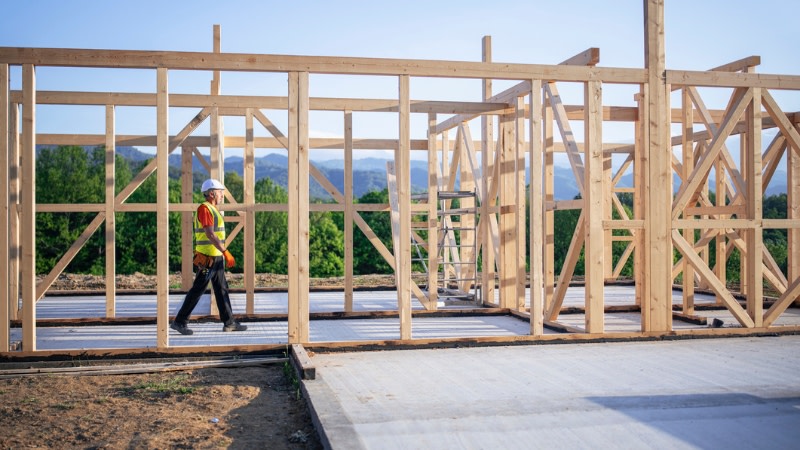The Three Challenges Keeping Developers Up at Night

Procore’s 2023 Construction Forecast research highlights three converging challenges that are keeping developers up at night.
So, what are these risks, how can developers respond to stay solvent today and sustainable tomorrow?
The three big risks outlined in Procore’s 2023 Construction Forecast ANZ won’t come as a shock to most developers.
After all, they’ve spent three years living through unprecedented disruption. What may come as a surprise is just how many strategies a developer can deploy in response.
Risk 1: Skilled labour shortages
Skills and labour shortages are expected to dominate board rooms and building sites throughout 2023.
Infrastructure Australia’s Market Capacity Report, for instance, predicts labour market demand will peak at 442,000 by the end of the year – more than double the projected available supply.

Pressure points in several key trades continue to cause program delays on current projects, and huge headaches for everyone along the length of the value chain. Projects can be slower to complete than forecast, and feasibilities on new projects can take far longer to materialise.
When it comes to skills attraction and retention, a growing cohort of developers and project owners are strengthening their suite of employee benefits and driving cultural change to attract more female talent. They are also embracing innovative construction methods like prefabrication and modular construction.
What developers can do:
Developers are also swapping spreadsheets for digital solutions to save hours of manual processing and elevate productivity. Most importantly, digital technology can help developers gain a clearer picture of their talent pool to make more intentional decisions about hiring, training and partnering.
Risk 2: Supply chain disruptions
Supply chains have always been vulnerable to disruption. McKinsey research undertaken before the pandemic found that, on average, companies experience a disruption of one-to-two months in duration every 3.7 years.
But in 2022, global supply chains faced the worst shortages in 50 years. Problems that started with the pandemic were compounded by the war in Ukraine, and the World Economic Forum suggests at least another year of low growth, high prices and bare shelves are ahead. Lead times, once six weeks, are more like six months for some materials.
What developers can do:
Developers have a new appreciation for resilient, agile supply chains. To manage this risk, the industry is moving away from ‘just in time’ procurement and towards new tools and technology solutions that provide greater supply chain visibility.

Risk 3: Climate change
Fires, floods and other extreme weather events have sharpened the focus on ESG—environment, social and governance.
With national governments now moving towards clear net zero targets, ESG has moved from niche to mainstream.
But when 40 per cent of the world’s energy-related emissions are created by the construction industry, we have a tall task ahead.
For developers, climate risk has multiple dimensions. There are clear physical risks: extreme weather events can damage or destroy construction equipment; rising temperatures can make working conditions hazardous; and changes to weather patterns can affect the timing and scheduling of construction projects.
But regulatory and reputational risks can be just as costly.
What developers can do:
Smarter systems enhance transparency and trust, simultaneously helping developers to tackle the complexities of climate action while managing regulatory and reputational risks.
Intelligence reveals risks, rewards
Widespread adoption of “construction 4.0 technologies”—an umbrella term for everything from drones to digital twins, augmented reality to artificial intelligence—is transforming the way we build, and how we manage construction risk.
And yet, the leaders remain separated by a long tail of laggards. RICS’ latest investigation into digitalisation in construction, for instance, found 40 per cent of all respondents were not using digital technologies on any of their projects.
But the market is on the move. Global investment in construction technology is expected to reach US$30.54 billion by 2027, a compound growth rate of 16.20 per cent over the next five years.
As skills shortages, supply chain snarls and climate change converge, leaders across Australia’s development industry are looking for smart, systematised solutions. Digital and data transformation can help you address all three risks and navigate a better business-as-usual.
Read Procore’s 2023 Construction Forecast here.
The Urban Developer is proud to partner with Procore to deliver this article to you. In doing so, we can continue to publish our daily news, information, insights and opinion to you, our valued readers.














